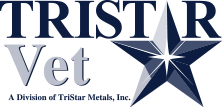Raw food diets for dogs have become increasingly popular over the past few years due to perceived health benefits. Some owners feel that raw food diets have improved their dog’s digestion, appetite, and overall health. Of course, it is always recommended to check in with your veterinarian first before making a dramatic change in your dog’s diet.
With so many food options available for pets, it can be hard to know the best choice for your dog, particularly if they suffer from adverse food reactions. Let’s take a look at what a raw food diet means for your dog, including benefits, risks, and other considerations.
What is a raw food diet for your pet?
A raw food diet isn’t just about raw meat. It consists of a range of uncooked foods. For example, organ and muscle meats, whole or ground bone, raw eggs, fruit and vegetables that are safe for dogs, and sometimes dairy products can be included in the mix. These foods can either be homemade or purchased from the store and may be freeze-dried or dehydrated.
The benefits of raw dog food
Many owners believe that a diet made with all-natural ingredients, such as lamb, beef, chicken, vegetables, and fruit, can increase the wellbeing of their dogs. They cite improvements in heart health, energy levels, eyesight, and even a shinier coat. However, while fresh food can be best, it’s important to realize there’s currently little scientific evidence supporting the benefits of a raw food diet for dogs.
Things to be aware of if switching to raw dog food
Before making changes to your dog’s diet, we recommend speaking to your vet. They can provide nutritional advice and guidance suitable for your dog, based on their age, breed, and any existing health conditions.
Some vets don’t believe a raw food diet is a good idea as it can carry several risks. Pathogenic bacteria are found in raw meat, which can cause sickness in both people and pets.
You may want to consider doing some research to determine how you feel about the risks of raw dog food, including how you can minimize risks. Another important consideration is where you source your meat to ensure it’s fresh and of high quality.
If your dog currently eats dry food, remember that all brands in the U.S. are required to meet strict nutritional standards.
Tips for changing your dog’s diet
If you’re switching to raw food, make sure you consider what dietary requirements your dog needs. You might also want to ease your dog into the change of diet. You can start by introducing raw food slowly to watch for any issues in their appearance or digestion or gently baked food options to start the switch, particularly if your dog is used to dry food.
Switching diets can impact each dog differently. You understand your dog better than anyone, so consider your dog’s normal eating habits and compare them to its response to raw foods.
It is generally recommended to speak with a vet who knows your dog and is familiar with raw food diets to help you make your decision and address any questions or safety concerns. At TriStar Vet, we offer a range of fully customizable vet kennels and veterinary exam tables that are ergonomic, durable, and dependable. Contact us today for affordable, easy-to-clean animal care products that will last for the life of your business.

